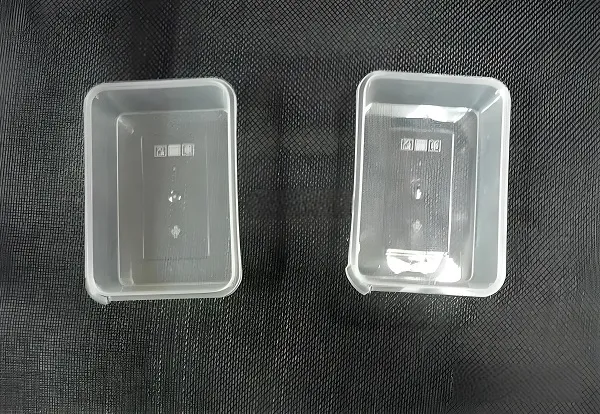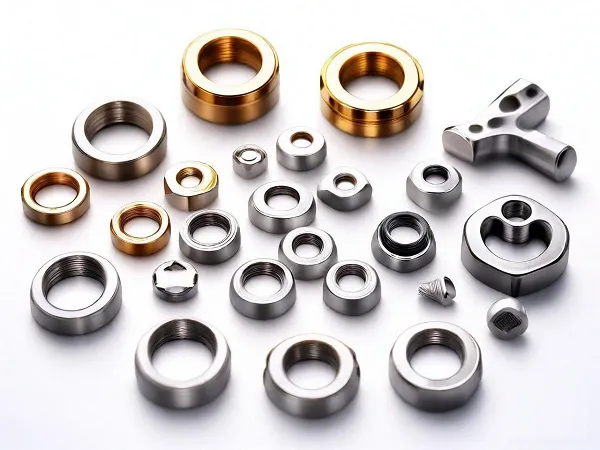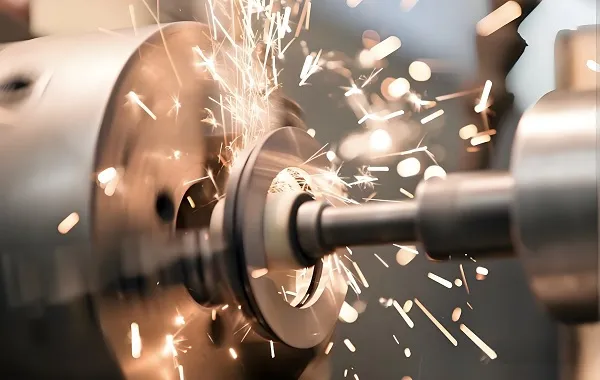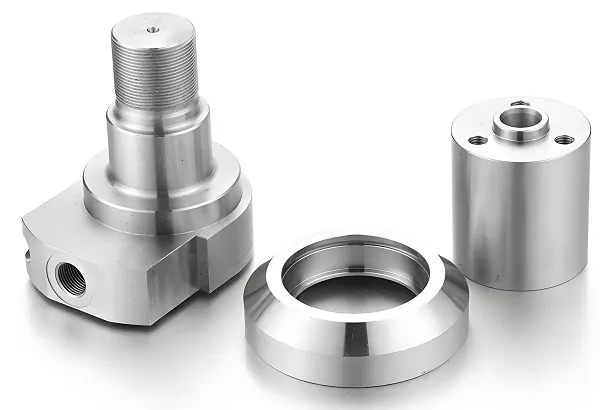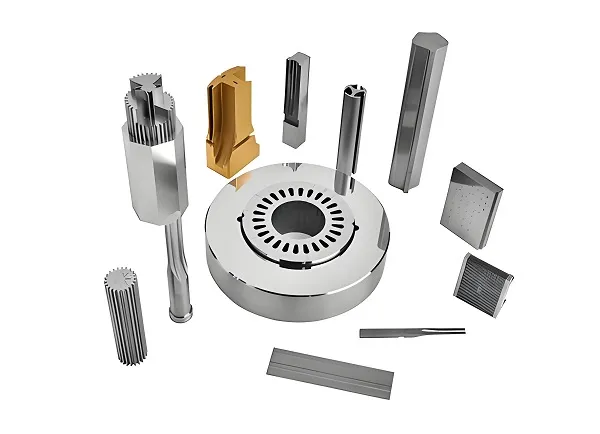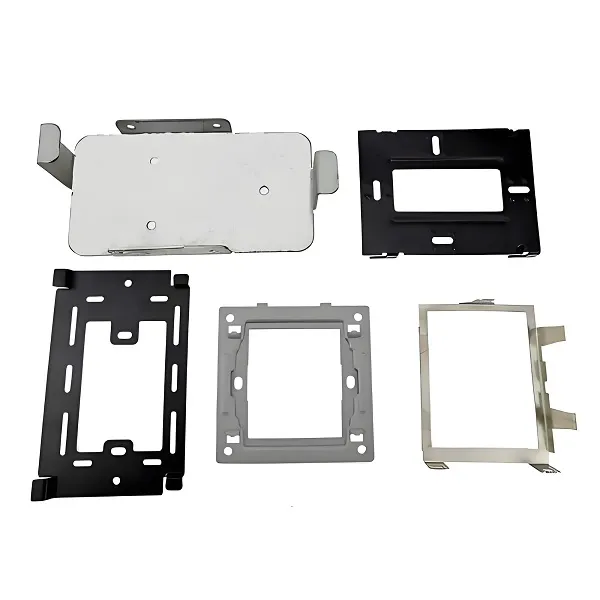In the forefront of today’s advanced manufacturing technologies, CNC (Computer Numerical Control) precision accessories, with their outstanding precision, complex geometries and excellent performance, have become the key supporting elements for the development of modern industry.
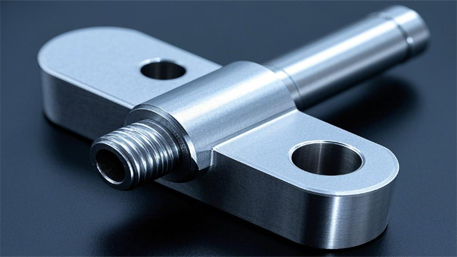
I. Materials Science and CNC Precision Accessories
The selection of materials plays a fundamental role in the performance and quality of CNC precision accessories. From traditional metal materials such as aluminum alloys, stainless steel and titanium alloys, to emerging composite materials such as carbon fiber reinforced polymers (CFRP), each material has specific crystal structures, mechanical properties and thermophysical characteristics. For example, the face-centered cubic crystal structure of aluminum alloys gives it good plasticity and machinability; the close-packed hexagonal structure of titanium alloys enables it to maintain a relatively low density while having high strength. When choosing materials, factors such as the working environment of the part, mechanical requirements, corrosion resistance and cost need to be comprehensively considered. Through the microstructure analysis of materials, such as using electron microscopy to observe grain size, phase distribution and defects, the performance of the materials can be deeply understood and provide a basis for the subsequent optimization of the processing technology.
II. In-depth Analysis of CNC Machining Technology
Mechanical Models of Milling and Turning
The milling and turning processes involve complex mechanical actions. Establishing precise mechanical models, such as cutting force models, tool wear models and heat transfer models, is crucial for predicting the deformation, residual stress distribution and surface integrity during the machining process. These models are based on the yield criterion of the material, cutting parameters and tool geometry, and can help optimize the cutting strategy and improve machining accuracy and surface quality.
High-Speed Cutting and Minimal Quantity Lubrication Technology
The emergence of high-speed cutting technology has greatly improved production efficiency. However, it also brings a series of challenges, such as centrifugal force under high-speed rotation, thermo-mechanical coupling and the dynamic stability of the tool. Minimal quantity lubrication technology, as an environmentally friendly and efficient cooling and lubrication method, can effectively reduce cutting heat, lower tool wear and improve surface quality, while reducing the impact on the environment.
Multi-Axis Linkage Machining and Error Compensation
Multi-axis linkage machining makes the manufacturing of parts with complex shapes possible, but at the same time introduces more error sources, such as inter-axis motion errors, nonlinear errors and thermal errors. Through error measurement and modeling, and the use of real-time error compensation techniques, such as measurement and feedback compensation based on laser interferometers, machining accuracy can be significantly improved to achieve sub-micron or even nano-level accuracy.
III. Academic Methods of Quality Control and Inspection
Statistics-Based Process Control
In the production process of CNC precision accessories, the statistical process control (SPC) method is applied to monitor and analyze the key parameters during the machining process, such as dimensional deviation, surface roughness and geometric tolerances. Through the drawing and analysis of control charts, abnormal fluctuations in the process can be detected in time, and corresponding corrective measures can be taken to ensure the stability and consistency of the production process.
Application of Non-Destructive Testing Technology
Non-destructive testing (NDT) methods such as ultrasonic testing, X-ray testing and magnetic particle testing, etc., can detect internal defects, cracks and material non-uniformity without damaging the integrity of the part. These techniques are based on the principles of acoustics, electromagnetics and ray physics, providing reliable means for the quality assessment of parts.
Coordinate Measuring Technology and Uncertainty Analysis
The coordinate measuring machine (CMM), as an important tool for high-precision measurement, the accuracy of its measurement results depends on factors such as measurement strategy, probe selection and environmental conditions. Through the analysis of measurement uncertainty and the adoption of appropriate measurement standards and calibration methods, the reliability and comparability of measurement results can be improved.
IV. Frontier Research and Development in Application Fields
Key Components in the Aerospace Field
In the manufacturing of key components such as turbine blades and disk shafts of aero-engines, the quality and performance of CNC precision accessories directly affect the efficiency, reliability and lifespan of the engine. The adoption of advanced cooling channel design, single crystal material processing and surface strengthening technologies can meet the requirements of high temperature, high pressure and high stress under extreme working conditions.
Implant Manufacturing in the Biomedical Field
In the biomedical field, such as the manufacturing of artificial joints and dental implants, not only are high-precision geometries and surface roughness of the parts required, but also good biocompatibility and corrosion resistance. Through surface modification technologies, such as plasma spraying, electrochemical deposition and ion implantation, the bonding performance between the implant and human tissue can be improved.
Exploration in the Micro-Nano Manufacturing Field
With the development of micro-nano technology, CNC precision machining is expanding towards the microscale. Using technologies such as focused ion beam machining, electrical discharge micro-machining and laser micro-machining, micron or even nano-level precision accessories can be manufactured, providing technical support for the development of micro-sensors, actuators and biochips.
To sum up, the manufacturing of CNC precision accessories is a multi-disciplinary field involving materials science, mechanics, physics, mathematics and control engineering. Continuing in-depth academic research and technological innovation will continue to promote the manufacturing technology of CNC precision accessories towards higher precision, more complex shapes and wider applications, making greater contributions to the progress of modern industry.

